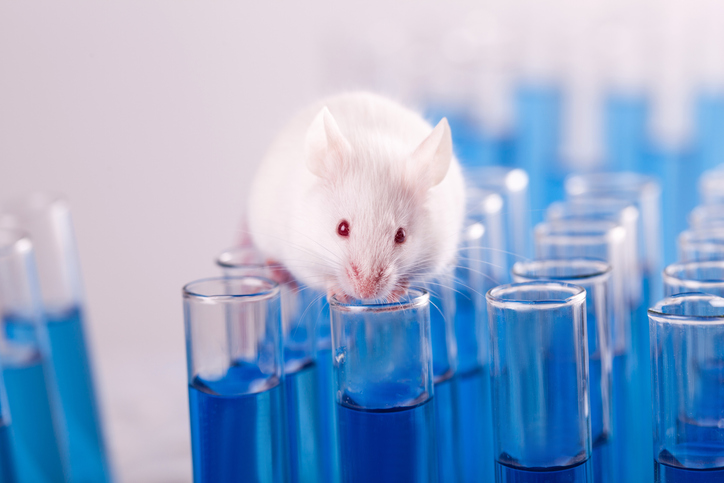I don’t try to tell people what to think. I don’t think it would work unless I omitted some critical detail, fiddled my statistics, framed the issue dishonestly or otherwise tried to back-fill an existing opinion with cherrypicked ‘evidence’. The truth is a bit more nuanced than that.
The binary narrative is the way of the lawyer or the activist and, when used in policy formation, typically leads to harm to one’s ostensible cause. Nuclear power, for instance, has long been demonised by environmental groups, some of which accepted money from the coal industry, but how much carbon would have been saved if we’d gone nuclear decades ago? Whatever the rights and wrongs of going nuclear today, it would almost certainly have been the right choice in 1980s.
So it is with animal testing. We all like to think that we’re against it, if not for human and animal medicines, at least for cosmetics – yet even that isn’t straightforward.
The animal tests of yesteryear reflected the threats to man, animals or the environment of yesteryear. Eye tests came in because mascara blinded women. The cosmetics industry was putting lead in UK lipstick as late as 1978. The Labour government banned animal testing for cosmetics in 1998 because they weren’t needed anymore for those old threats. Yet, in the intervening years, we’ve discovered ‘safe’ cosmetics ingredients that are suspected of bleaching coral reefs, causing ecosystem collapse and leading to everything from cancer to infertility in humans. In other words, we’re still animal testing, but in far greater numbers of wild animals, pets and in humans that haven’t been able to give informed consent.


It’s never been the case that the biosciences wanted to use animals carelessly. Experiments using animals that might cause any degree of pain were banned by default in 1876 and would-be researchers have to make a case for an exemption for their work on ethical grounds. It’s also long been the law that animals cannot be used if there’s a workable alternative, and that’s just fine.
New research methods are being developed all the time, just as tech develops everywhere else, and we are very keen to support and use them. When google added streetmap 3-D walkthroughs to its one-dimensional map offer, it didn’t render the old concept of a map useless. It instead enriched and complemented the existing, highly successful, tool. However, you could also now in some cases use streetview in place of a map, maybe to infer which way was north from the street signs.
In this way, some new bioscience techniques we’ve got allow us to answer regulatory questions in a different way. Animal tests can tell you which drugs will be safe in first-in-man trials about 90% of the time. Yet newly-workable organs-on-a-chip, which are a thin layer of human cells you can expose compounds to, can be used to tell you which ones will be dangerous with 87% accuracy. The UK’s world-leading animal replacement centre is trialling a way to mine that excellent dog data using AI without needing an animal. It’s the same question of ‘shall we develop this drug?’ answered in a different way. And that’s fine, too, in fact it’s better, where it can be applied.
Finding out exactly where such things can be applied is more or less where we are in 2024. We don’t have a suite of workable fake organs that can answer every, or even most, questions that animals models can, although that’s what we’d like to have one day. In the meantime, the problems we face are not hypothetical. Animal experiments gave us every vaccine for covid, sure, but their influence is also hiding in plain sight.
You might have seen Arthur, 11, on the BBC who wasn’t responding to his first cancer treatment, so they switched him to Blina, short for blinatumomab or, as scientists know it, B-lineage specific Anti-tumour Mouse Monoclonal antibody, developed using mice, rats and dogs. Arthur is far from the only patient to benefit, yet activists will tell you his medicine cannot be because Arthur is not a giant mouse, and some MPs will tell you that the treatment that saved his life, is not ‘human-relevant’, and we will tell them they are wrong.
As of 2024, new methods first and foremost enrich the picture we’re able to build of surprisingly complex biological life, to prevent and treat disease in man, animals and the environment. They will in some cases replace animals, and in others divert the course of research so a drug never gets tested in an animal, test tube or human. It will be hard work and we will likely never stop using animals unless we stop harming wild animals with our way of life, keeping pets or farming them. New diseases will also have to stop spontaneously evolving as they have since the dawn of life on Earth.
We can only hope that the ‘debates’ in Parliament on animal testing won’t take the form they always have – an exaggeration of the harms faced by the animals in the lab, an assertion the experiments will never work, the apparent testimony of someone with medical training and claims we’re on the brink of a technological non-animal revolution. You can find the same tired formula uttered in 1876, 1925, 1981 and 2023.
The truth is rather more complicated. The sooner we embrace that fact, the sooner we can set about making sure the policy environment reflects the world we want to see, not the outcome of trying to live guided by a slogan.
Politics.co.uk is the UK’s leading digital-only political website, providing comprehensive coverage of UK politics. Subscribe to our daily newsletter here.












